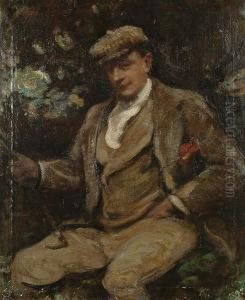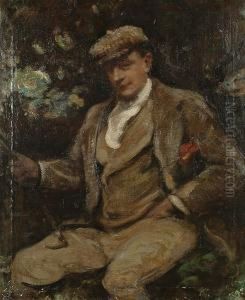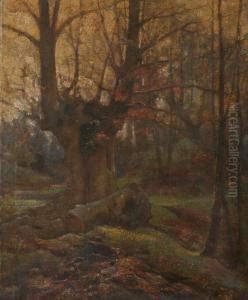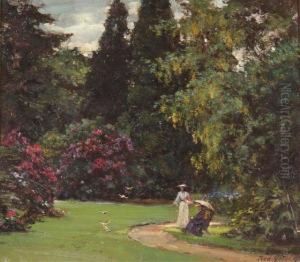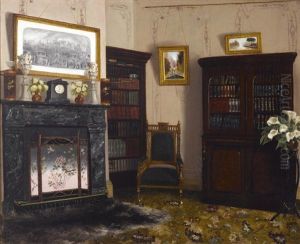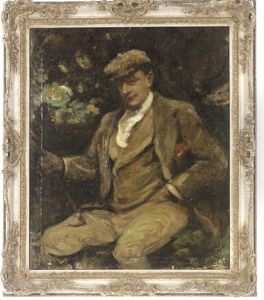Frederic Yates Paintings
Frederic Yates was an English painter born in 1854 in Manchester. Yates was primarily known for his portrait works, capturing the likeness and essence of his subjects with a delicate realism that resonated with the Victorian and Edwardian sensibilities of his time. His career spanned a period of significant change in the art world, from the late 19th century into the early 20th century, yet he remained steadfast in his commitment to the classical traditions of portrait painting.
Educated at the Manchester School of Art and later at the Ecole des Beaux-Arts in Paris, Yates was significantly influenced by the French academic painting tradition. His education under masters such as Alexandre Cabanel imbued in him a meticulous approach to form and color, which became hallmarks of his work. Following his studies, Yates returned to England, where he established himself as a sought-after portraitist among the British elite. Throughout his career, Yates exhibited his work at prestigious venues, including the Royal Academy in London, where his portraits were celebrated for their elegance and psychological depth.
In addition to his portraits, Yates also painted landscapes and genre scenes, though these were less prominent in his body of work. His landscapes, often painted during his travels in Europe, exhibit a sensitivity to light and atmosphere, showing a different facet of his artistic temperament. Despite the changing tastes of the art world and the rise of modernist movements in the early 20th century, Yates remained loyal to his refined, realist style, which continued to find favor among his patrons.
Frederic Yates's legacy is that of a master portraitist who captured the likenesses of his era's notable figures with grace and precision. His work provides a fascinating insight into the personalities and fashions of his time, preserved with an artistry that transcends the mere documentary. Yates passed away in 1919, leaving behind a rich portfolio of work that continues to be appreciated for its craftsmanship and elegance. His paintings are held in various collections and museums, testament to his skill and enduring appeal in the history of British art.
